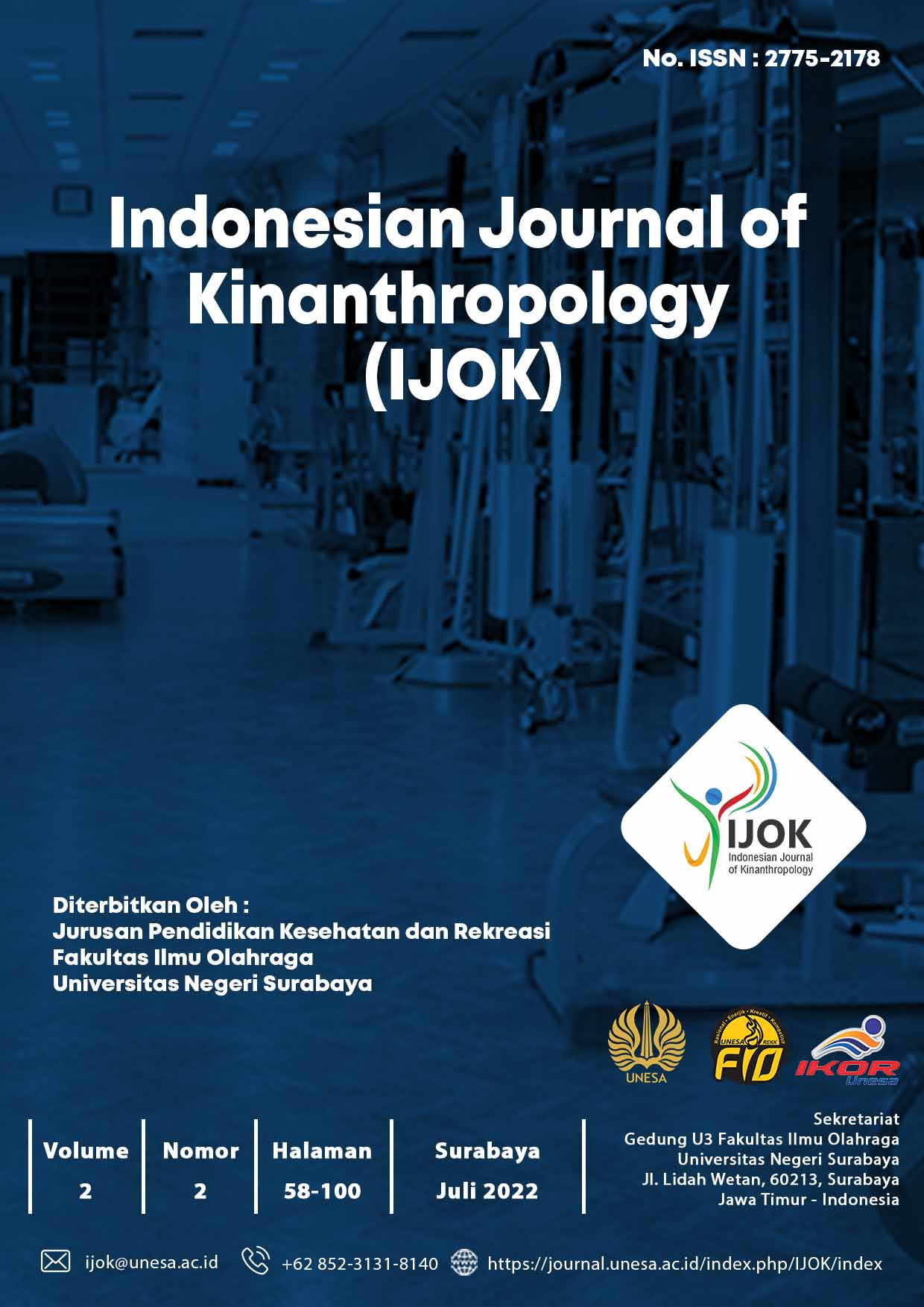Anxiety Level in Floor Kayang Gymnastics Learning
DOI:
https://doi.org/10.26740/ijok.v2n2.p89-94Keywords:
anxiety; learning; bridge upAbstract
Background: Observations in the field show that students are less comfortable and less confident when practicing the Kayang movement in floor gymnastics learning of physical education. This study aims to determine the level of anxiety learning bridge up floor gymnastics in class X students at SMA Negeri 8 Semarang with each factor.
Methods: This quantitative research uses a survey approach to obtain data with a questionnaire as the data collection instrument. The sampling technique used purposive sampling technique, as many as 133 students were used as research samples.
Results: The results showed that the level of anxiety of students in learning gymnastics on the bridge up floor was influenced by psychological factors in the very low category of 9 students, low 34 students, 45 students moderate, 36 students high, and very high 9 students. While the anxiety level of physiological factors in the very low category is 14 students, the low category is 26 students, the medium category is 50 students, the high category is 36 students, and the very high category is 7 students.
Conclusions: Physical education teachers are expected to be able to use a variety of appropriate methods so that students are able to practice the bridge up movements in floor gymnastics comfortably and confidently.
References
Arikunto, S. (2016). Prosedur Penelitian. PT Rineka Cipta.
Pasiak, T. (2009). Unlimited Potency Of The Brain: Kenali dan Manfaatkan Sepenuhnya Potensi Otak Anda tang Tak Terbatas. Penerbit Mizan.
Ramaiah, S. (2003). Kecemasan: Bagaimana Mengatasi Penyebabnya. Pustaka Populer Obor.
Sudaryo, Y., Efi, N. A. S., Medidjati, R. A., & Hadiana, A. (2019). Metode Penelitian Survei Online dengan Google Forms. Penerbit Andi.
Sugiyono. (2015). Metode penelitian pendidikan : (pendekatan kuantitatif, kualitatif dan R & D (Cetakan 21). Alfabeta.
Trismiati. (2004). Perbedaan Tingkat Kecemasan Antara Pria dan Wanita Akseptor Kontrasepsi Mantap di RSUP Dr . Sardjito Yogyakarta. Psyche.
Tysar. (2009). Pengertian Kecemasan. In Wordpress.
Downloads
Published
How to Cite
Issue
Section
License
Copyright (c) 2022 Indonesian Journal of Kinanthropology (IJOK)

This work is licensed under a Creative Commons Attribution-ShareAlike 4.0 International License.
Please find rights and licenses inIndonesian Journal of Kinanthropology (IJOK). By submitting articles/ article manuscripts, the author agrees to this policy. No special documents required.
The copyright of the received article once accepted for publication shall be assigned to the journal as the publisher of the journal. The intended copyright includes the right to publish the article in various forms (including reprints). The journal maintains the publishing rights to the published articles.
 Abstract views: 405
,
Abstract views: 405
, PDF Downloads: 533
,
PDF Downloads: 533
, PDF Downloads: 72
PDF Downloads: 72




